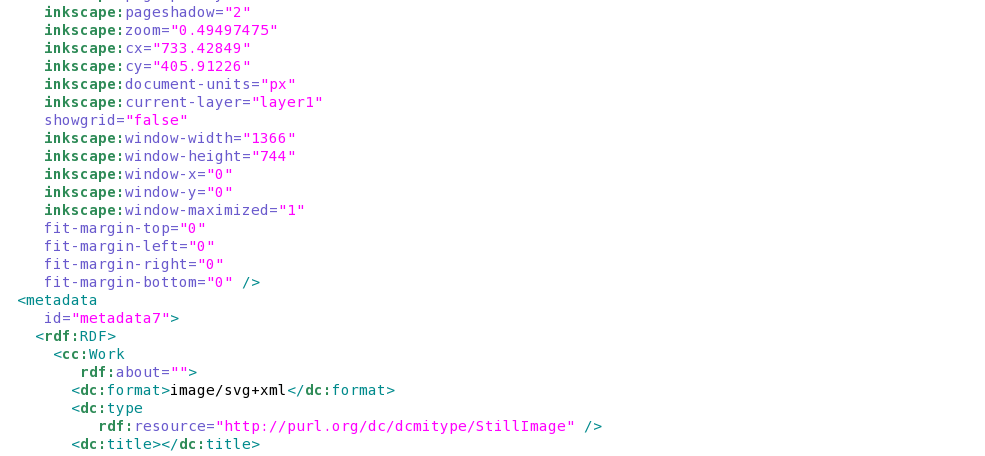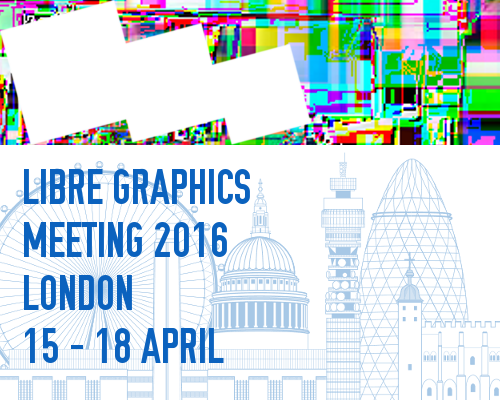
A snippet of SVG code generated in Inkscape
Scalable Vector Graphics (SVG for short) is an XML-based format for vector graphics, as the name might imply. It’s an open standard developed by the World Wide Web Consortium, which you may know of already by its short form: the W3C. Because SVG is an open standard, its specification is public. Anyone can read the rules and guidelines that make up the SVG format. Anyone can make software that parses or produces SVG. And because the specification is public, that reading, parsing, programming and changing can go on for ever. File formats based on open standards never have to die. Your SVG could be immortal.
Let’s talk about the specification a little. For those not already rabidly interested in standards, the specification is the standard: it’s the document defining what a particular standard is and how it can be implemented. The specification makes everything else possible. The SVG specification has been under development since 1998. It grows and changes a bit, but stays stable. In its current form, SVG 1.1, it defines a language, and ultimately a format, with a diverse set of capabilities. It includes the features most of us know, like vector shapes, paths and text rendering; and features many may not know about, like animation and interactivity.
One of the joys of SVG is that it really is under active development, working up to a new major release of the specification. If you take a look at the archives of the SVG Working Group mailing list, you’ll see people discussing features and implementations. The contributors to those discussions aren’t just W3C employees (in fact, the majority of them aren’t). Many of them work for companies with an interest in SVG, or are just involved members of the public. It’s a diverse group of people helping to develop and troubleshoot the standard.
SVG embodies one of the great features of open standards development: it unites a whole collection of different players and stakeholders in a group effort to make something good. Companies that might otherwise spend their time, effort and labour building closed systems instead end up working together to build something everyone can use.
Read the rest of our Document Freedom Day series on SVG:
Celebrating Document Freedom Day, celebrating our favourite open standard
SVG or: How we learned to stop worrying and love document freedom
Open standards allow the unexpected

Pingback: Celebrating Document Freedom Day, celebrating our favourite open standard | Libre Graphics magazine
For tons of information about the capacities and development of SVG, check that great lecture by Tavmjong Bah, from the LGM 2013 meeting:
http://medialab-prado.es/article/the_future_of_svg_and_web_standards